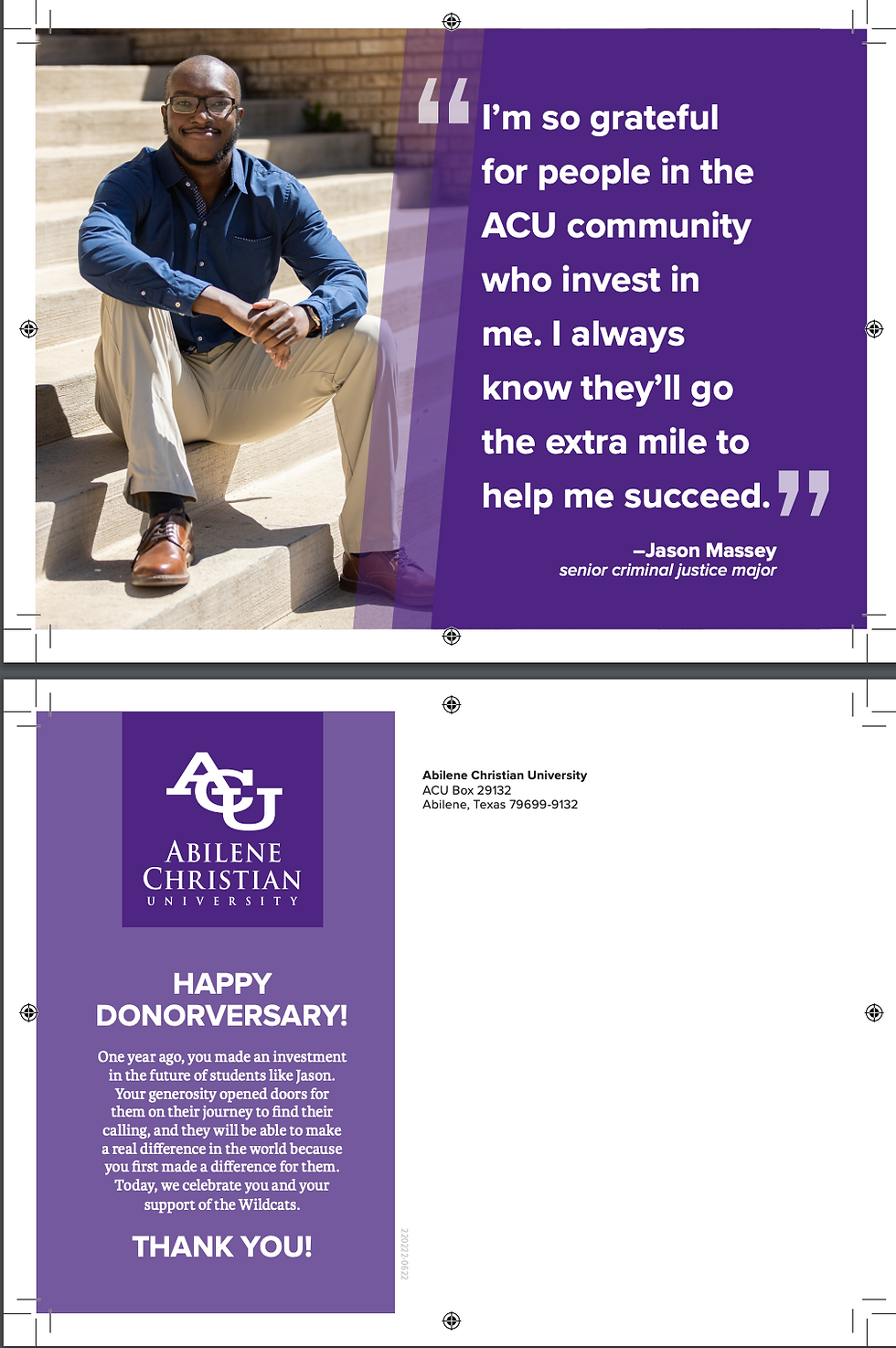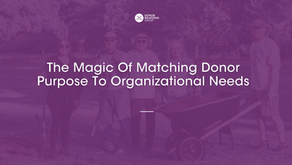Rethink Donor Communications: How to Save Time and Increase Impact
- Lynne Wester

- May 1
- 6 min read

As a consultant, one of my favorite client projects is a donor relations program assessment. There’s real power in requesting an outsider’s perspective to take a look “under the hood” of your shop and, with an objective lens, identify what’s working well and what can be optimized.
While every consultant has their own style when completing these important reviews, I like to utilize the Four Pillars framework and take a Pillar-by-Pillar review of my client’s work product, team capacity, leadership involvement, and accompanying donor response. That includes asking clients to allocate the amount of time spent working within each Pillar. In a perfect world, we’d find donor relations teams to be spending their time within each Pillar roughly as follows (to ensure maximum program ROI):

The graphic above represents how much time should be spent in each of the Four Pillars of Donor Relations as a percentage of team bandwidth. That means, if you’re a donor relations team of one (and bless you, my friend!), you should be spending roughly 4-6 hours per week on acknowledgments. How do you spend your time? Take a moment when you’re done reading this article to map out how you allocate your time. Where are you spending too much time? Where do you need to cut back?
One area of donor relations that, as a consultant, I find organizations dedicating far too much time and resources to is acknowledgments, specifically holiday and birthday cards. These efforts are most definitely part of the acknowledgments pillar and are often a heavy organizational lift to execute. How many of you start working on holiday cards in August? How many of you are living spreadsheet nightmares, trying to wrangle signatories and racing towards post office deadlines when you could be spending time demonstrating impact?
The reasons for the “greeting card shuffle” are myriad, ranging from variations of “the way we’ve always done it” to reliance on anecdotal feedback, including “our donors tell us they love them.” While that may be, from my experience in speaking with hundreds of donors from a wide variety of organizations, I consistently hear that while holiday cards and birthday cards are nice to receive, what donors actually want are updates on the impact of their giving.
Research from visionary leaders like Penelope Burk and data from AFP’s Fundraising Effectiveness Project highlight that donors will stop giving if they do not see measurable results. And yet we continue to dedicate hundreds of hours and thousands of dollars to sending out holiday cards and birthday cards that land in the same piles (both digital and physical) as cards and greetings from insurance agents, dentists, restaurants, and fashion brands.
At this point, I can feel you nodding your heads and saying “Oh my gosh, I wish we could just stop—I’ve tried for years!” Well, dear readers, let me share a few pointers to help you tame the beast of birthday and holiday greetings as well as some alternative special occasions to celebrate if greeting cards are here to stay at your shop:
Don’t send a card if you can’t personalize it. The one caveat to sending birthday and holiday greetings is whether or not you can add meaningful personalization to it. If you can, then go ahead and send it. However, I’m not talking about adding a “wet signature” to a pre-printed card, but rather adding meaningful details that demonstrate that you (or your org’s leadership) have an established relationship with a donor. Here’s the level of detail I’m talking about:
“Dear Jim, Sending birthday greetings and best wishes for a wonderful year ahead. I hope that you’re able to take your new boat out fishing and that you finally reel in that 10-pounder. I’m so glad we were able to connect at Homecoming this year—thank you, again, for inviting me to stop by your tailgate and try your world-famous barbecue. Give my best to Nancy and please know that my offer to host you both for the Spring Football preview remains on the table. With every good wish, Colton”
Ask your leadership if they can provide this level of detail for each of the recipients on their greeting card list. This exercise will shrink your lists considerably and provide you with a great “measuring stick” of whether or not a card will serve as a meaningful relationship management touchpoint. Stanford University’s Medical Center Development team brilliantly reimagined their holiday card process in 2024 by asking their CEO and Dean to send personalized emails to the organization’s top 75 donors in lieu of holiday cards. Take a look at their CASE award-winning entry and see if this approach would work for your organization, too.
Ask your donors. I love few things more than a donor survey. There’s nothing quite like quantitative evidence from your donor base to support a decision to change programming. When designing a survey to measure the efficacy of birthday and holiday greeting cards, I would be sure to ask questions that would assess the efficacy of the strategy of your acknowledgments program as well as the associated tactics to carry out that strategy. Take a look at the graphic below. We know that donors who feel appreciated are donors we are more likely to retain year after year. That’s our strategy–ensuring donors feel appreciated. Our tactics to induce or bring about that state of feeling appreciated include acknowledgments and gratitude communications.
So, when thinking about how to ask questions regarding whether the tactic of sending out birthday cards and holiday cards is helping achieve your strategy of appreciated donors, I would first establish a baseline donor level of donor appreciation, written as “How well does <<ORGANIZATION NAME>> communicate gratitude for your giving?” Include a Likert scale response from very well to very poorly. Then, I would ask about specific gratitude communications and activities and ask donors to list them in rank choice order in terms of most effective to least effective. I’d be sure to include things like acknowledgments (thank you notes for giving), signature gratitude events (such as “Thank a Donor Day”), as well as birthday and holiday cards. The answers may surprise you, but in any case you’ll have quantifiable information from YOUR donors to justify making changes to your donor communications calendar and programming.

Make it about you–really! This may be the only time I utter this phrase when speaking about donor communications. Think about how you can celebrate your organization’s “birthday” with your donors. Charter Days, Founder Days, and birthdays of notable organizational figures all make really fun opportunities to share greetings and “thinking of you” messages. AND they can be done en masse digitally, lightening your workload considerably. Take a look at this example from my alma mater, celebrating the 215th birthday of its namesake. John Purdue gave the initial funding to establish Purdue University, so there’s a lovely tie-in to celebrate the impact of ALL donors in shaping the future of Purdue. That’s the key to implementation here–finding ways to celebrate the philanthropic support of our donors. That will help you move the needle on that survey question written above.

Find alternatives to “the big holidays” and birthdays. Christmas, New Years, and now even Thanksgiving are holidays that bring about an onslaught of direct mail and electronic communications. If your organization’s leadership is committed to the greeting card game, consider pitching lesser-celebrated holidays that allow you to share gratitude with your donors. Some of our favorites:
Valentine’s Day! While chocolates and flowers are nice, Valentine’s Day is widely observed, occurs on the same day each year, and is all about DONOR LOVE, something we can all get behind. Resist the urge to say too much in your copy…there’s a fine line between sharing donor love and just oversharing!😊 Take a look at this adorable example from Phoenix Children’s–see how they cleverly tied the theme of “hearts” into this communication? Too cute!


Your donor’s giving anniversary. What better way to share gratitude and show a donor that you care about them than sending a special card for the anniversary of their gift to your organization? Take a look at this example from Abilene Christian University–we love that this simple postcard includes all gratitude WITHOUT an additional ask! That’s a smart donor relations tactic–and if you can work with your partners in annual giving, it would be truly brilliant to follow up this anniversary piece with a separate anniversary solicitation a week or so later!

At the end of the day, every activity we execute in donor relations should move the needle to building more meaningful relationships. Holiday and birthday cards aren’t inherently bad—but if they’re costing you time, energy, or sanity without delivering real returns, it’s time to rethink. Your donors deserve more than just seasonal gestures—they deserve to feel truly seen, appreciated, and connected to the impact they help create. Be bold. Be strategic. And let us know what amazing ideas you come up with!
Written by Colton Withers Colton Withers, Director of Operations, is a consultant and educator who has helped clients inspire donors through exceptional communications, building and implementing innovative programs, designing and analyzing surveys, and training employees on the art and science of donor relations.





